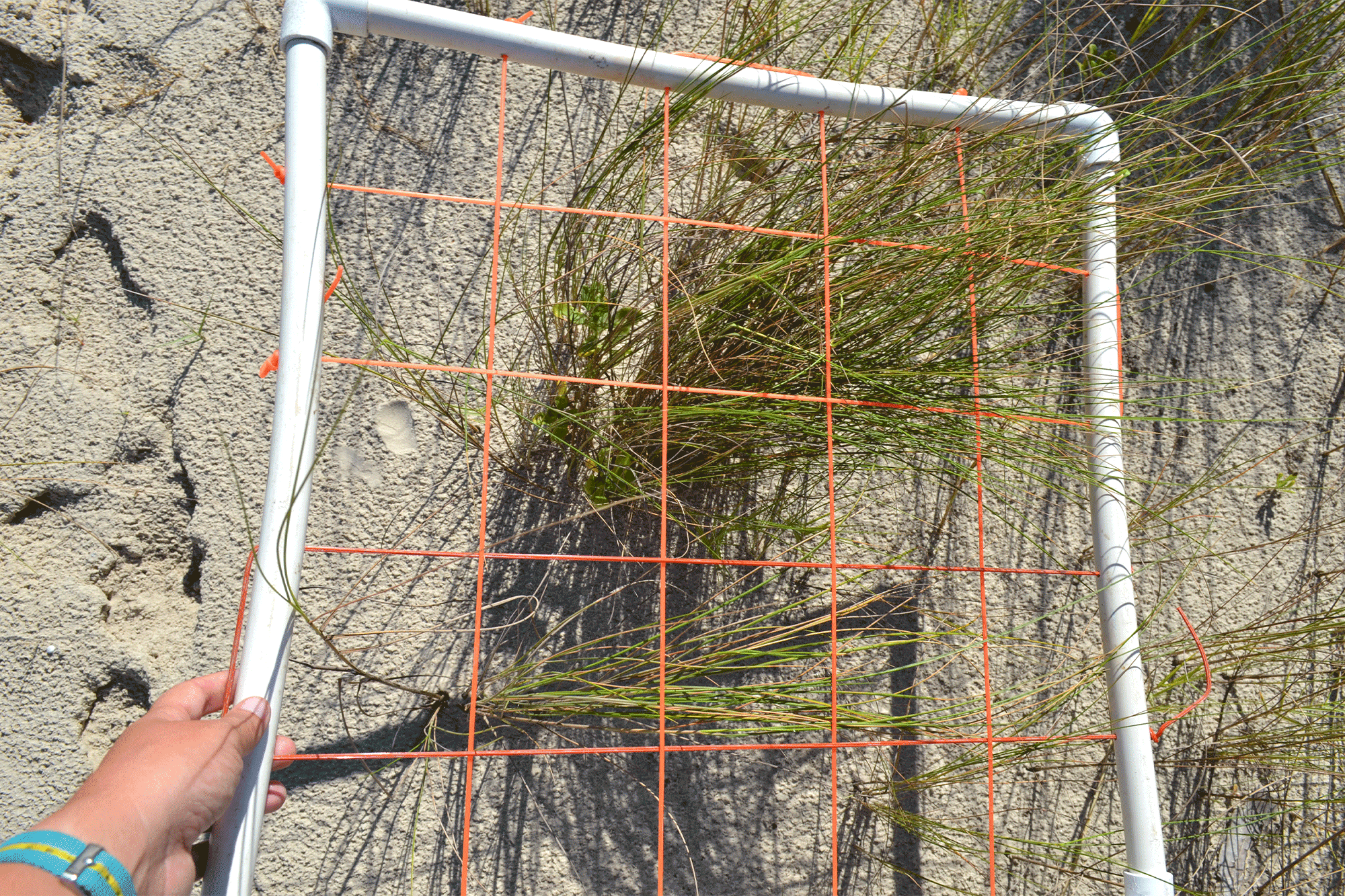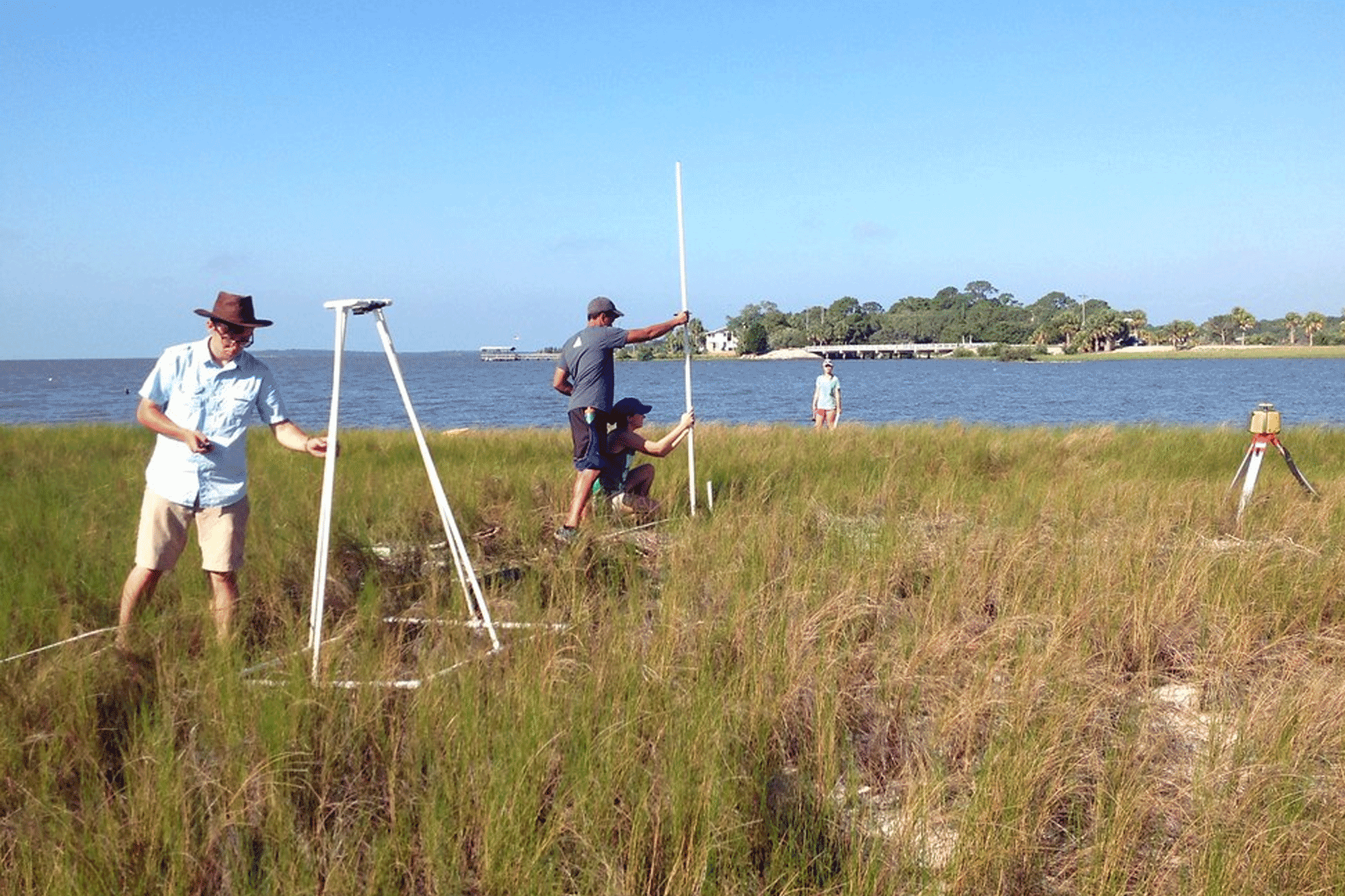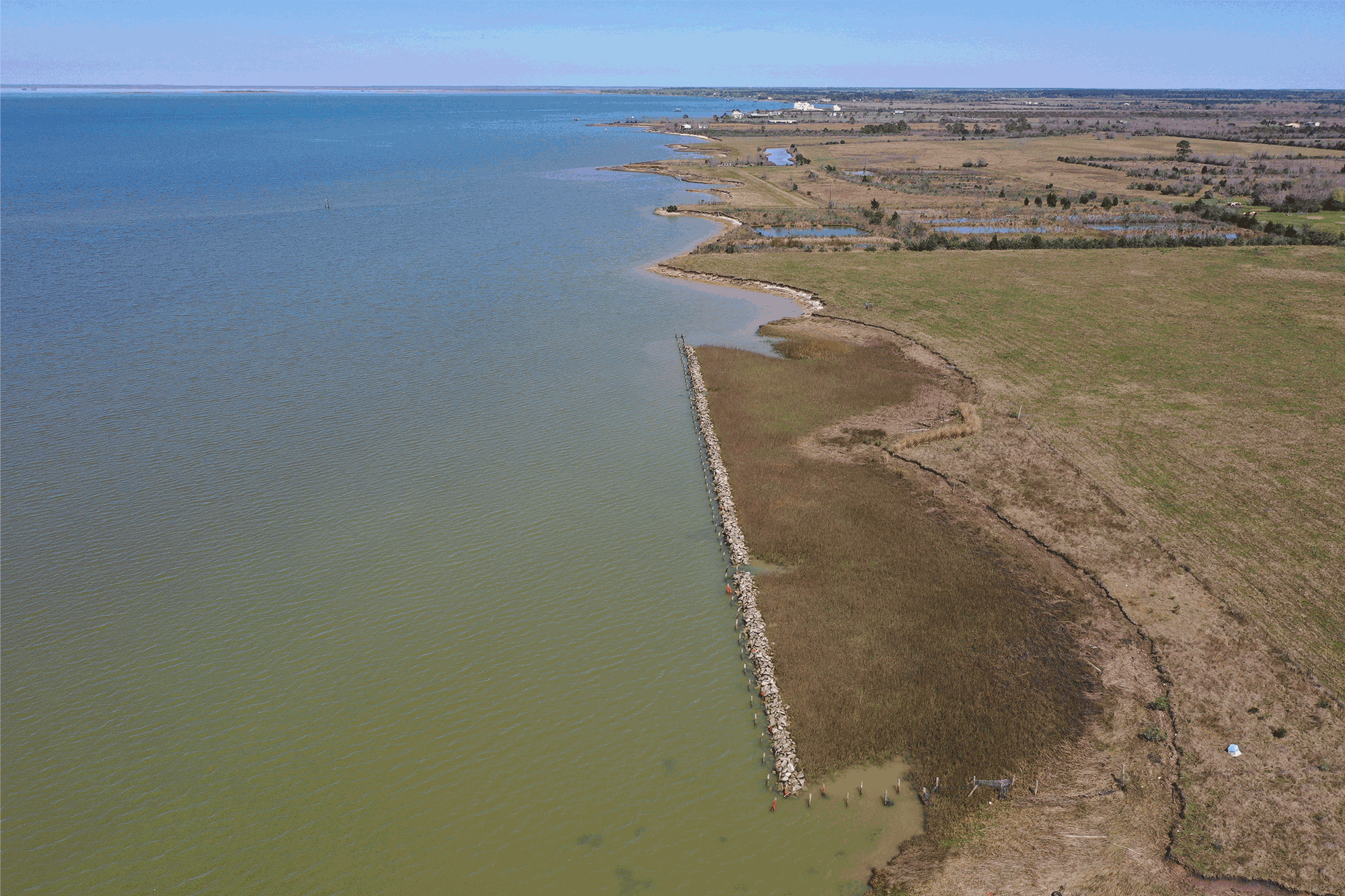Relatively lower maintenance needs are an advantage of many living shoreline types compared to purely “hard” shore stabilization methods. Plants and reef–forming marine organisms such as oysters “naturally” reinforce the site over time as they colonize and grow; however, monitoring and maintenance are still important to ensure that all the elements of the project are operating as intended and providing the expected benefits.
Periodic or continuous monitoring will allow you to spot problem areas before they become major issues. Some living shorelines may require monitoring as a component of their authorization under state or federal requirements.
 Long–term monitoring can be as simple as a visual inspection after major storms to identify areas requiring additional planting or where materials need to be replaced or reinforced.
Long–term monitoring can be as simple as a visual inspection after major storms to identify areas requiring additional planting or where materials need to be replaced or reinforced. Vegetation Monitoring
Vegetation monitoring will help identify vegetation that is not surviving or thriving. Photographs taken at regular intervals will help you track changes in your living shoreline over time. Or, you can select a 5 by 5-foot plot and estimate the percent cover of different plant species.
Reviewing your notes over time will help you discern trends and understand which species perform better or worse than others. You can also record other factors you observe such as invasive species, changes in water depth, amount of sunlight reaching the plants, or accretion of sediment.
If plants are not thriving in certain areas, it could be a sign the soil is eroding beneath them or that the plants are not suitable for the site. The solution may be as simple as planting a different, more suitable plant species or installing a structural solution to lessen wave energy and slow erosion.

Land and water animals love to feed on newly planted vegetation. Believe it or not, cows have even come down to graze on newly planted living shorelines! To keep unwanted animals out of the area for the first full growing season, a small fence or mesh enclosure is often effective.
Material Repair and Replacement
In areas with higher wave action, rock, oyster shell, or other stabilization methods may be used. It is important to monitor these features to ensure they do not become displaced, especially following storm events. Maintenance of these features may include:
- Re-staking or reinstalling erosion control materials
- Rock or oyster bag replacement or readjustment
- Debris clean up
Tips for Minimizing Maintenance Needs
- Select native vegetation and ensure a reliable source of water if planting in a riparian area;
- Plant vegetation according to the planting season that is best for the species – avoid hurricane season and heat of the summer;
- Plant shrubs and trees during the rainy season if substantial water is required for survivability;
- Keep natural upland areas with native vegetation where possible to prevent landward erosion;
- Minimize stormwater runoff to the project area to prevent erosion;
- Large debris, such as logs, algae mats, and trash, should be periodically cleared from the site to protect wetland plants from being smothered;
- For beach and water access, keep a narrow path to the water unplanted to avoid trampling vegetation;
- Non-native invasive plants should be controlled and replaced with native wetland plants and shrubs;
- Trim any overhanging limbs that might be shading out marsh plants, especially during the early days of establishment.

The strength of a living shoreline depends on healthy native vegetation, both at the water’s edge and in natural upland areas.
Keep Exploring

Browse our library to discover a variety of different resources that can be helpful for contractors and property owners.
Learn More
Although funding cannot be guaranteed, resources are available for property owners to explore related to living shorelines.
Learn More
Learn about important factors and general costs to consider when choosing among shoreline stabilization techniques.
Learn More